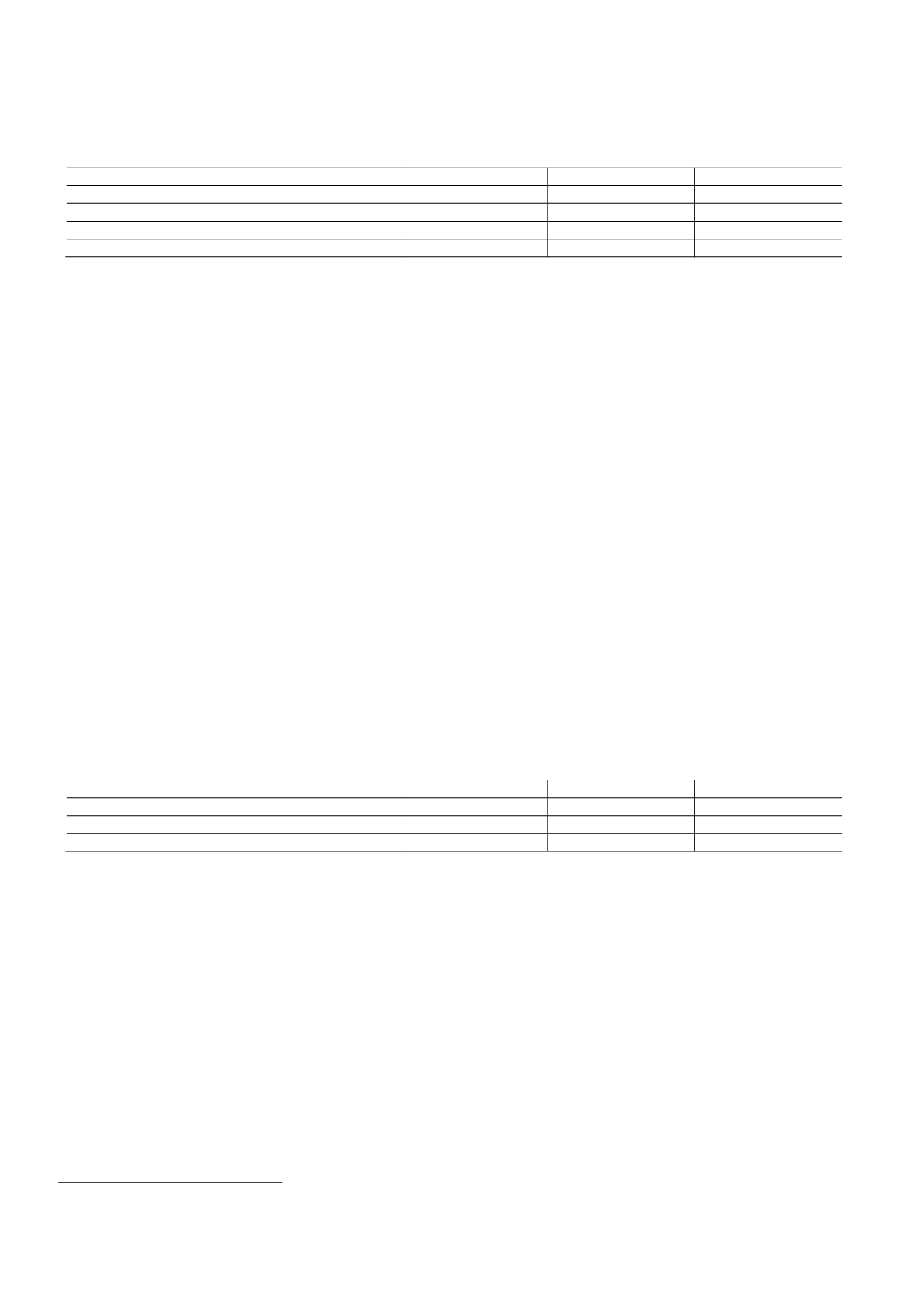
75
CIMIC Group Limited Annual Report 2016 |
Sustainability Report
75
IMPROVING ENERGY EFFICIENCY
The Group is a substantial user of energy, particularly driven by the mining operation of Thiess which utilises large volumes of diesel. The
Group’s energy consumption for 2016 was as follows:
Energy consumption
CPB Contractors
Leighton Asia
Thiess
Total Gigawatt hours (GWH)
399
248
1,825
Of which: Liquid, gas and solid fuel (%)
93
83
99
Electricity (%)
7
17
1
Energy spend ($m)
27
29
84.5
In 2016, CIMIC participated in the first HOCHTIEF Energy Award
54
which elicited 44 submissions, representing projects and ideas from
across CIMIC Group, HOCHTIEF and Turner. CIMIC Group companies took out 1st and 3rd places, and filled 6 of the top 10 positions.
Thiess’ ‘Lighting Plant Refurbishment Program for the energy-efficient lighting plant in mines’ initiative was awarded 1st place. The
program’s key benefits include 75% less fuel use and carbon emissions, 60% less frequent servicing, refuelling decreased from every
3days to just 12 times each year, and servicing extended from every 250 hours to every 400 hours – now carried out in tandem with
refuelling. When the 160-strong fleet of lighting plants is refurbished, Thiess is set to save more than 3.2 million litres of diesel and 8.5
million kilograms of CO2-e each year.
The 3rd placed project was Thiess’ ‘Novel gas technology to displace diesel in the world’s largest mining trucks’ initiative which aims to
replace 80% of the diesel required for heavy-duty mining trucks through the use of natural gas. Other CIMIC Group initiatives in the top
10 included:
•
reducing fuel consumption on haul trucks at the Melak coal mine by adjusting engine power output (Thiess Indonesia) – 5th place;
•
improving the efficiency of generator sets on the Melak coal mine project by controlling power spikes and optimising output to meet
consumption demands (Thiess Indonesia) – 7th place;
•
use of a Remote Area Power System which incorporates a coordinated generator, solar panels and battery bank at the Melbourne
International RoRo & Automotive Terminal (MIRRAT) (CPB Contractors) – 8th place; and
•
increasing the efficiency of a plant yard at Laverton in Victoria by upgrading to energy efficient LED fittings and a 20kW solar system
(CPB Contractors) – 10th place.
The Group is working hard on initiatives such as those outlined above that promote the delivery of energy efficient, environmentally and
socially responsible projects.
REDUCING WATER CONSUMPTION
The Group’s construction and mining projects seek to identify and implement opportunities for water efficiency and savings. Each of the
Group’s projects develops a water management plan to effectively manage water according to the unique conditions of that project.
Generally Sedgman is required to comply with their client’s water management plans.
During 2016, the Group’s contracting activities used almost 12.7 million kilolitres of water and discharged almost 2.2 million kilolitres.
Water use (ML)
CPB Contractors
Leighton Asia
Thiess
Withdrawals
1,710
1,853
3,676
Re-use
41
53
5,331
Discharge
(135)
(1,800)
(268)
The water management plans address the environmental values of the surrounding environment; potential water sources; and the
regulatory commitments and landholder obligations that a particular project must meet. The plans systematically address all risks
associated with water management on the project and identifies controls that the project will put in place to manage environmental
values and associated risks. They also focus on identifying options for minimising potable water use and maximising recycling and water
reuse. These options are critical on projects where water is scarce.
On the Sydney Metro Northwest - the CPB Contractors John Holland Dragados (CPBJHD) joint venture achieved a 37% reduction in total
water used below the reference footprint, as the result of the closed loop recirculation networks used for cooling on the project tunnel
boring machines. Potable water use was reduced through on-site rainwater harvesting and the use of recycled water.
54
A competition run across HOCHTIEF’s various operating entities that sought to identify and recognise best practice examples and good ideas to save
energy and improve energy efficiency.
75


